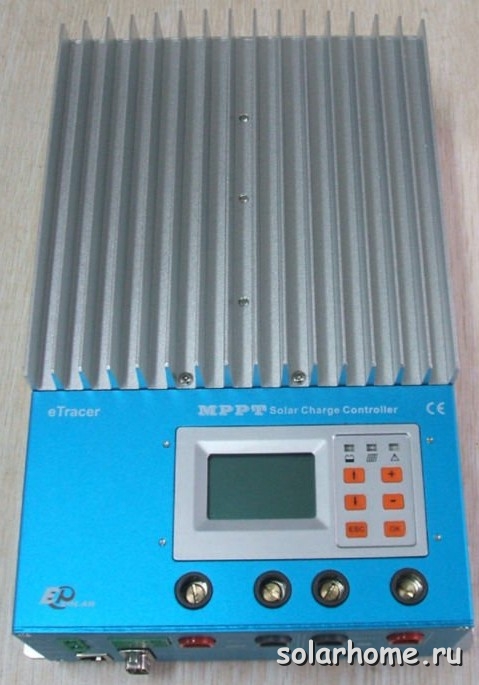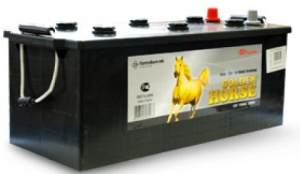Complete energy autonomy or how to survive with solar panels in the outback (part 1. theoretical)
It all started with the fact that I purchased a plot of land in the village, which was not passed by electrical wires. No big deal, I thought. “After all, according to the law, I have to be connected to the power grid within 6 months from the moment of the conclusion of the contract. If I knew then that I would have to master an autonomous power supply and plunge into the world of solar energy ...
In the first part I will try to highlight the theoretical substantiation of my choice and calculations that will facilitate the understanding of the volume of investments for building your own energy system.
In the second part I will describe the practical implementation of my ideas with economic calculations, applied equipment and circuitry of the working power system. I will also describe the advantages, disadvantages and own mistakes in the implemented project.
In the third, if it comes to it, I will talk about plans for the integration of an autonomous power system and a conventional power grid in a private house.
')
The realization that there is no electricity yet, and the house has already been assembled, came in the spring, when the construction and finishing season began. And if the house was assembled with the help of a gasoline generator, then it’s impossible to live in such a village in the village, and it’s costly for a drill or a pair of light bulbs to drive a 2.5 kW gas generator. It is very easy to derive the first rule: in the village you need a gas generator, if there is a need for electricity at any time. Networks are unstable and no one will repair them in the first minutes after a failure. The second rule: the generator should work on the same type of fuel as the car. If the fuel suddenly runs out, you can drain it from the car, and if the tank in the car is dry, you can do the reverse procedure.
If you look in the left corner, you can see how the generator works for the sake of one drill and a radio receiver. After this picture, thoughts began to creep in that electricity didn’t need much, but often. For example, in the evening you need to light the house, which requires about 100 watts of energy. Vitali thought about buying a second, low-power petrolgenerator, but were rejected for several reasons: tarahtenie, maintenance, mechanics, which means wear and sooner or later, failure. It was necessary something autonomous, simple, reliable.
Having studied the forum of autonomists, rereading hundreds of branches and learning how to distinguish a single crystal from a polycrystal, it was decided to use solar energy for the benefit of a particular house. After all, on Habré a lot of reports about how another cellular company in a remote region spent a lot of rubles and was able to save even more, and here everything is clear, with their own hands and by example.
Let's turn to the theory. The main thing that will have to deal with in the house with an autonomous energy system (hereinafter autonomous system) is the desire of all households to include kettles, irons, microwaves and other household appliances that consume crazy kilowatts of energy. For hair dryers and irons, you can run an electric generator.

So, first of all, it is necessary to exclude the majority of electrical appliances that we use in everyday life: electric kettles, electric stoves and so on. The replacement will be any gas stove and a gas cylinder that can be charged to almost any gas station. So, we cook and heat with gas - this is the third rule of autonomy.
LED lighting. You can take LED assembly, individual LEDs or LED strip. In the latter case, you can buy wholesale in the Chinese online store right on the whole house and decently sacknomoit. The main task is to choose the voltage of the LEDs equal to the voltage of the energy storage devices in the house. After all, any transformation will eat extra watts. Hence the fourth rule: LED lighting wherever possible.
Motion sensors seriously help save electricity - it is also revealed empirically. On the way to the toilet, the stairs to the second floor or in the hallway is best to put a motion sensor and LED strip. This will avoid walking in the dark to the switch and will save you from unnecessary energy loss when someone forgot to click.
Such a sensor will cost about 300-350 rubles, but it will save a lot of nerves and energy. Own consumption is scanty in comparison with the included and forgotten lighting. One funny case from practice: pets quickly calculated the range of the sensor and had fun at night entering and leaving the zone of visibility, including their own light.
And now about the technique that will be needed to create a solar power unit:
1. Solar panels:

2. Solar battery charge controller:

3. Batteries. When discussing the type of batteries, so many copies were broken that I don’t even want to recall. One of the most difficult tasks and the most expensive part of the system:

4. Inverter from DC to AC with a voltage of 220V:
These are the four main elements of an autonomous energy system based on solar batteries. I will tell you about the expansion of the functional in the second, practical part, but for now I will sign a minimum autonomy for a country house, where I would like to watch TV in the evening, get off the laptop and sit at the table by the lamplight. Everything is considered on the basis of the middle zone of Russia in the period from April to September. At other times of the year, the sun is noticeably smaller, and the summer season is almost closed or not yet open.
Take the initial consumption:
1. An average laptop with a consumption of 80 Wh will work 5 hours a day.
2. The average TV with a consumption of 40 Wh (h) will work 3 hours a day
3. illumination with 3 LED strips (24 W \ pcs), which will be enough for a room of about 40 sq.m. will work 4 hours
Total we have need of energy: 808 Wh
If an ordinary car battery with a voltage of 12 V is chosen as the energy store, then 67 Ah will be spent in the evening. In order not to land the battery and prolong its service life, it is recommended to discharge the battery by no more than 30%, which means that the required capacity is 200 Ah and above. In addition, it will be necessary to replenish the ampere hours spent during daylight hours, and the efficiency and inconstancy of the sun must also be taken into account in order to select the required number of solar cells. Assume that the sun will shine for 8 hours, of which it will be cloudy for 3 hours and the efficiency of energy production will fall. Thus, we must compensate for 67 Ah in 5 hours. It would seem that there is nothing simpler: 14 And we pour in 5 hours and that's all, but the solar energy has a lot of nuances. Batteries do not take charge linearly - to “fill” the battery with energy, the received current decreases and the last hours of charging are extremely slow.
Turning to the calculation of the necessary equipment that will need to be purchased for the electrification of a country house, we obtain:
1. Solar battery 2 pcs x 100 W - 15000 r
2. The charge controller is the simplest - 800r
3. Battery 190 Ah - 8500 r
4. 3 LED strips - 1200 p.
5. Inverter 12V-220V - 2000r.
Total: 27,500 rubles
Equipment was considered the most inexpensive given the minimum comfort described above. If you like the material and want to see the implementation of a more powerful and operational system, please let me know so that I will start writing the second part.
Source: https://habr.com/ru/post/251359/
All Articles